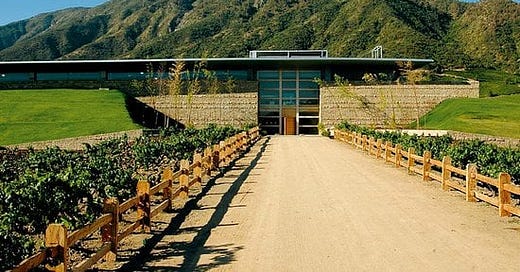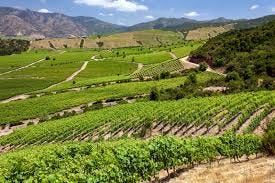In the broader Rapel Valley of Chile, the Colchagua and Cachapoal sub-regions stand out for their generous sunshine, rolling hills, and a reputation for robust, fruit-driven Cabernet Sauvignon. Compared to Maipo’s cooler conditions, these warmer valleys deliver deep color, plush tannins, and opulent fruit—yet remain threaded with the brightness typical of Chilean reds. From the foothills of the Andes to the flatter coastal zones, each area crafts its own take on modern Chilean Cabernet, bridging power and precision.
Defining Traits
Mediterranean Climate
Long, dry summers and mild winters ensure grapes reach full phenolic ripeness. Irrigation from the Andean snowmelt helps maintain vine health in these arid zones.Varied Elevation
Vineyards perched on foothills often yield more structured Cabernets, while flatter valley-floor plantings showcase riper, softer fruit.Vibrant Red Fruit and Spice
Plush blackberry and black cherry often lead, with hints of mocha or black pepper. Oak regimens can layer on sweet spice or vanilla, elevating the luxurious mouthfeel.
Premium Subscriber Content
Terroir and Winemaking Deep Dive
Andean Influence and Coastal Breezes
Although warmer than Maipo, Colchagua and Cachapoal still benefit from mountain winds at night and occasional coastal airflow. This diurnal temperature range is pivotal for sustaining Cabernet’s acidity, ensuring the wines never veer into jammy excess.Sub-Appellations - Apalta, Marchigüe, Requíno
Apalta: A prime zone known for steep hillsides and granite-rich soils that foster complex, ageable Cabernets.
Marchigüe: Drier, more exposed to coastal winds, giving grapes intense concentration.
Requíno: Valley-floor vineyards with deeper soils, often yielding approachable, fruit-forward expressions.
Keep reading with a 7-day free trial
Subscribe to Daily Terroir: Exploring Wine Regions One Day at a Time to keep reading this post and get 7 days of free access to the full post archives.





